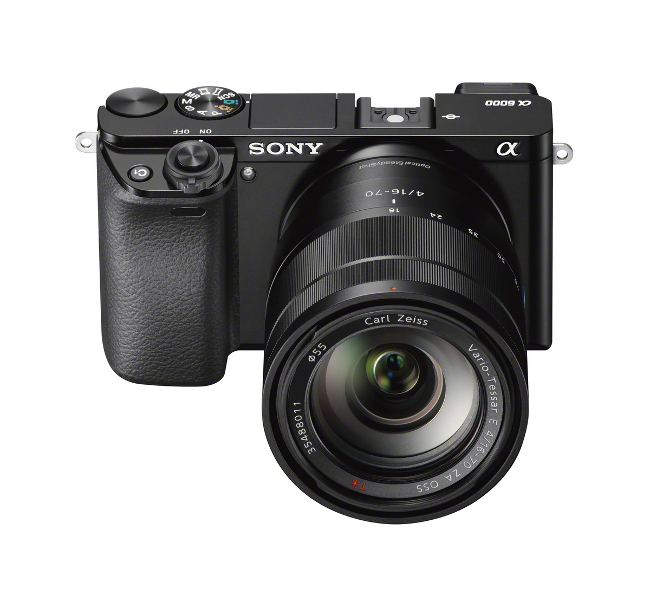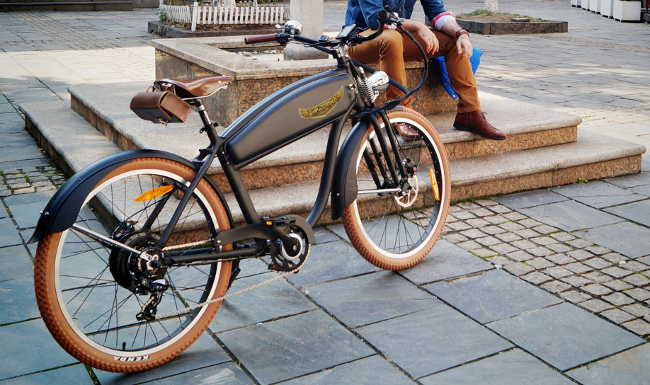Ariel Rider e-bike
A look at gadget happenings, as Nokia plans an Android smartphone to take on emerging markets, camera manufacturers reveal their latest gizmos, and a Hong Kong-based start-up develops an e-bike with style.
Microsoft’s Nokia turns to Android
Last week, The Wall Street Journal claimed Nokia will unveil its first Android-powered smartphone at Mobile World Congress (MWC) next week.
Although Nokia’s devices and services business was bought over by Microsoft for €5.4bn last September, its own Windows Phone operating system is not compatible with the low-cost phones that are now the key drivers in the smartphone market. To tap into rapidly expanding emerging markets – where Android smartphones dominate – Nokia has to adapt to survive.
Much like Amazon’s Kindle tablets use a forked version of Android, the rumoured Android-based Nokia will likely sport a closed version of the operating system, leaving out some Google-specific features and the Google Play app store. Instead, apps built by Microsoft and Nokia will feature heavily and a dedicated Nokia app store will ensure that this is an Android device in Windows Phone clothing.
The rumoured ‘Nokia X’ will enable the Finnish phone-maker to build affordable smartphones that are more advanced that the basic Asha range. It’s expected that this device will cost around the US$100 mark, but we should out for sure when MWC kicks off on 24 February in Barcelona.
New camera crew from Canon, Panasonic and Sony
Last week was teeming with new product announcements from camera-makers Canon, Panasonc and Sony. For the humble point-and-shoot, we had the addition of three new Ixus cameras to the Canon range. These colourful and stylish cameras are all capable of shooting 720p HD movies and each one comes with Eco Mode to conserve battery life.
At the top of the new range is ths Ixus 155, which features a 20MP sensor with Digic image processing, 10x optical zoom (20x ZoomPlus) and optical image stabilisation with Intelligent IS. The 150 is a step down with similar specs on a 16MP, 8x optical zoom model – the same sensor and zoom capabilities that come with the most basic Ixus 145.
Prices start at €110 for the 145 moving up to €149 for the 155 and all three cameras are available this month.
Canon’s Ixus 145, 150 and 155 compact cameras
A new kid on the block among premium compact cameras is the Panasonic Lumix DMC-TZ60, the brand’s slimmest to date with a Live View Finder and 30x Ultra Zoom.
This advanced compact is the first in the TZ series to feature RAW compatibility and is also capable of full-HD video recording. A manual control ring allows users to adjust settings without fiddling around with buttons, while the wide-angle Lecia DC Vario-Elmar lens takes it all in.
The TZ60 features an 18.1MP MOS sensor, Light Speed Auto Focus, and advanced connectivity for image sharing. Its Power OIS now includes Hybrid OIS+ for video recording, using five-axis correction to steady that shot, while a new Food Detection mode enhances dinner-table pics for foodies.
The TZ60 comes with an RRP of €479 and is available from stockists nationwide.

The Panasonic Lumix DMC-TZ60
Panasonic also introduced a new toy to its interchangeable lens range in the form of the Lumix DMC-GH4. Packed with a quad-core CPU, the GH4 is powerful enough to manage 4K video recording, while a newly developed 16.05MP Digital Live MOS sensor and improved Venus Engine image processor keeps everything looking top notch.
The 3-inch OLED rear monitor is adjustable, rotating 180 degrees to the side and tilting 270 degrees up and down. The device is also Wi-Fi and NFC-enabled, for easy sharing of images and pairing with smartphones. Panasonic has even considered smartphone users without an NFC chip, allowing for pairing through QR code scanning.
The GH4 is also built for outdoor use with a rugged, easy-grip chassis that’s well-sealed to ensure that it’s both splash and dust-proof. Compatible with a wide range of micro four-thirds lenses, the GH4 also features an enhanced AF system comprising 49 focus points and capable of high speeds of 0.07 second.

The Panasonic Lumix DMC-GH4
While the GH4 is quick, it’s not quite as quick as Sony’s new α6000, which stakes its claim as the world’s fastest auto-focus among interchangeable lens cameras equipped with an APS-C image sensor. The α6000’s Fast Hybrid AF takes just 0.06 seconds – which is even faster than some DSLRs – and features a wide coverage area of 179 focal points. The OLED Tru-Finder rear monitor allows users to preview results as they adjust photo settings.
Packing a 24.3MP Exmor APS HD CMOS sensor and Bionz X processor, the α6000 is capable of continuous shooting at 11fps and full-HD video recording. Available in either black or titanium, it also features a built-in flash, NFC chip, Wi-Fi connectivity and seven customisable buttons.
The α6000 is available for pre-order now, reaching general sale in Europe in April 2014.

Sony’s α6000
Finally, at the top of the range of new camera releases sits Canon’s EOS 1200D, a new entry-level DSLR capable of full-HD (1080p) video capture, and the first model to launch with an EOS Companion app for mobile.
The app offers tips and tutorials for the newbie, including step-by-step exercises to help them to learn digital photography basics at their own pace. The app also includes a troubleshooting guide to combat the most common problems users face, plus tips on composition.
The 1200D itself packs an 18MP APS-C CMOS sensor, Digic 4 processor and nine-point AF system. In video capture, users can control exposure, focus and sound levels, while Scene Intelligent Auto is there to assist those still getting to grips with the manual controls.
The compact and lightweight DSLR comes with a 3-inch LCD and is compatible with a selection of over 70 Canon EF lenses, details of which are available through the Companion app.
The EOS 1200D will be available from March 2014 with an SRP of €419.99 for the body only.

An e-bike with style
Bann Industrial and Manufacturing, a four-year-old e-bike manufacturer based in Hong Kong, has created a dream bike for stylish, eco-conscious techies. The new brand is called Ariel Rider and aims to marry old-school design with high-tech biking.

The Ariel Rider range feature hand-stitched handlebar grips, an advanced trip computer and a powerful low-energy motor on a durable, lightweight all-aluminium frame. For safety, there’s a control system, advanced disc brakes and LED lights that automatically switch on when it’s dark.
Bann’s e-bikes are available in 17 countries and the Ariel Rider models already have a waiting list stretching to the end of April.
Stay informed – get daily updates on the latest happenings in technology directly to your inbox.
